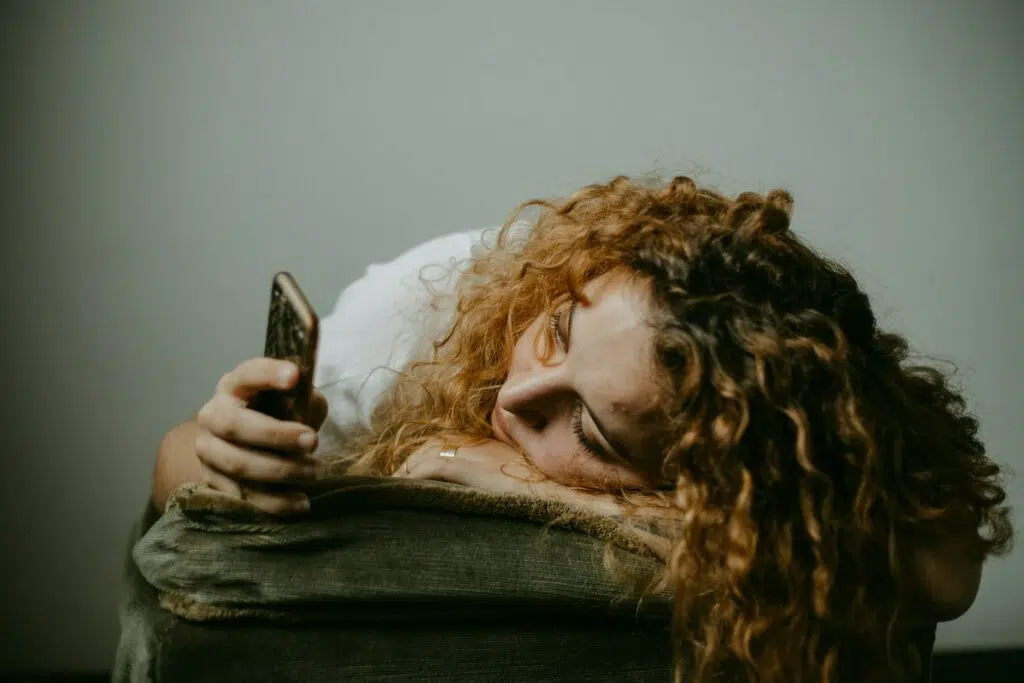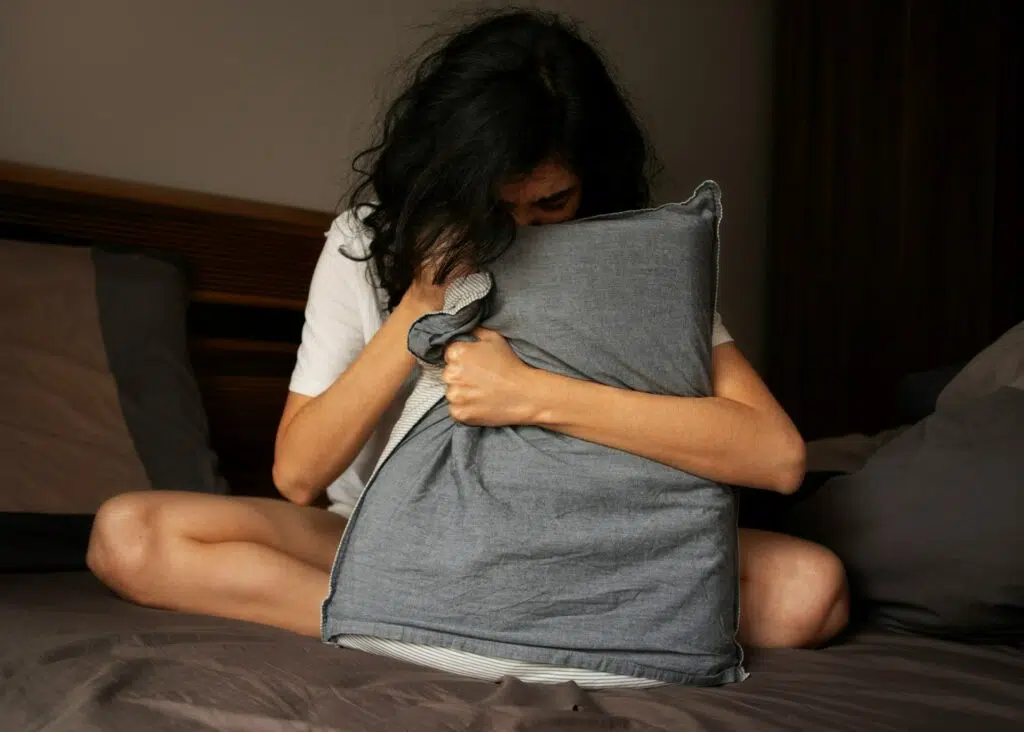Signs of Insecure-Disorganized Attachment in a Relationship

Attachment styles tell us about the way we form bonds and maintain relationships. A disorganized attachment style can create a confusing and unpredictable relationship dynamic. This type of insecure attachment style is complex and challenging for both the disorganized attacher and their partner. Read on as we explore the signs of a disorganized attachment and how to develop a healthier and more secure attachment style.
What is Insecure-Disorganized Attachment?
Attachment theory describes the importance of bonds and attachments we form in early childhood with a primary caregiver, usually parents. As you get older, different attachment styles can influence how you relate to others and build relationships.
Here’s a breakdown of the different attachment styles in a relationship: secure and insecure attachment styles:
- Secure attachment style: Individuals with a secure attachment are comfortable opening up and trusting others. They aren’t afraid to be open and vulnerable and naturally form healthy and secure relationships.
- Insecure-avoidant attachment style: People with an insecure-avoidant attachment style tend to avoid intimacy and closeness. They may look like hyper-independence and self-reliance, often appearing emotionally unavailable.
- Insecure-resistant attachment style: Anxious attachers crave intimacy but fear abandonment. They may show unhealthy behaviors such as clinginess, jealousy, and controlling behavior and often seek constant reassurance.
- Insecure-disorganized attachment style: Individuals with an insecure-disorganized attachment style have inconsistent and unpredictable behavior in relationships. They may cycle between closeness and distance and typically struggle with emotional intimacy and trust.
A disorganized attachment is unique in the way it blends elements of avoidant and anxious attachment styles. Also referred to as a fearful avoidant attachment style, a disorganized attachment is characterized by an intense fear of intimacy while also craving it. This type of attachment style may form if a child experiences trauma or neglect in their early years.
Because of the chaotic behavior that often comes with an insecure-disorganized attachment style, relationships can be especially unpredictable. But with self-awareness, professional guidance, and patience, it’s possible to develop more secure relationships.
What Causes Insecure-Disorganized Attachment?
It’s believed that an insecure-disorganized attachment stems from traumatic childhood experiences. This type of trauma occurs when a primary caregiver becomes a source of fear instead of creating a sense of security. Childhood trauma such as verbal, physical, or sexual abuse may cause an insecure-disorganized attachment.
Based on attachment theory, a child with an insecure-disorganized attachment has learned to survive in a potentially abusive environment. The unpredictable nature of abuse can mean that the child doesn’t know how to behave to both get comfort and protect themselves. As an adult, this can translate to an individual who wants intimacy and closeness in relationships but, at the same time, is terrified by that connection. Conflicting desires and behaviors can result in unpredictable and chaotic behaviors in intimate relationships as an adult.
An insecure-disorganized attachment style is typically seen in individuals who have suffered trauma. Because disorganized attachment develops from terrifying behaviors from caregivers and parents, it’s more common in homes suffering from child abuse and domestic violence.
Signs of Insecure-Disorganized Attachment
An intense need for love alongside a deep fear of closeness and feeling unworthy can result in conflicting emotions, thought patterns, and behaviors. Disorganized attachers tend to have a negative view of themselves and are at a higher risk of developing mental health issues, like anxiety and substance abuse.
Here’s what an insecure-disorganized attachment can look like in a relationship:
- Trust issues, clinginess, jealousy, and controlling behavior.
- Both crave and shut down emotional intimacy.
- Tendency to shut down or go silent during arguments.
- Communication can be difficult to follow and inconsistent.
- Experience extreme mood swings and struggle to regulate emotions.
- Seek constant assurance and approval.
- Picking fights and jumping to conclusions without any facts.
- A push and pull dynamic.
An individual with a disorganized attachment often chooses an unsuitable partner that proves their belief that no one can be trusted or no one can love them. A person can be demanding and difficult to deal with, pushing away their partner. This, once again, confirms their belief that someone will always leave them.
If you recognize any of these signs in yourself or your partner, speaking to a mental health professional is essential so you can process your feelings and learn to trust.
Supporting a Partner with Insecure-Disorganized Attachment
Supporting a partner with a disorganized attachment style requires patience and compassion. There will be times when you feel confused and frustrated. Remember that your partner likely believes that you will abandon them. In their eyes, the rejection is going to happen; they just don’t know when.
As a partner, there are things you can do to help create a sense of security in the relationship. While you can’t heal someone else’s trauma, you can be stable, consistent, and kind. Here are some strategies to help:
- Be patient and keep communication open and honest.
- Follow through on any promise, big or small.
- Listen and try to understand their concerns.
- Don’t expect your partner to trust you right away.
- Be supportive, but don’t forget about your own needs.
- Encourage therapy to help them address underlying issues and problems.
Overcoming Insecure-Disorganized Attachment
Individuals with a disorganized attachment style often carry with them deep emotional wounds. Healing from trauma is necessary to develop a more secure attachment style, and speaking with a therapist can help you work through the painful process of dealing with your trauma.
Understanding and overcoming an insecure-disorganized attachment can be complex. As this type of attachment style often stems from traumatic or inconsistent caregiving in childhood, a therapist can help you understand your triggers, address unhelpful beliefs, and help you form meaningful connections.
Here are some strategies for healing and cultivating a more secure attachment style:
- Speak to a therapist to understand your attachment style.
- Practice mindfulness to help manage and reduce anxiety.
- Establish and set clear and healthy boundaries.
- Learn grounding techniques like deep breathing exercises.
- Build trust gradually and avoid rushing into intimacy too quickly.
- Try to be honest and communicate your needs.
- Write down your thoughts, feelings, and experiences to help you identify patterns.
Benefits of a Secure Attachment Style
An individual with a secure attachment style most likely grew up in a home where they could rely on their primary caregiver. The attachment figure provided a sense of security and the child felt like they could safely explore the world.
The foundations of a secure attachment in a relationship are built on mutual trust and respect. As an adult, a secure attachment style helps you to form and maintain long-term, healthy relationships. Here’s what a secure attachment in a relationship looks like:
- You trust each other and are honest about your feelings and needs.
- You feel comfortable sharing your emotions.
- You both feel valued and understood by the other.
- You value your independence and respect each other’s need for space.
- You communicate openly and respectfully, expressing your needs and concerns.
- You resolve conflict calmly and work together to find a solution.
- You respect each other’s opinions and boundaries.
- You support each other’s growth and goals without feeling threatened.
There’s no such thing as a completely perfect relationship. Even couples with secure attachments can experience ups and downs. The difference is that partners in a securely attached relationship tend to approach challenges with open communication, empathy, and togetherness.
When to Contact Thriving Center of Psychology
It’s difficult to say the exact moment someone should seek help from a mental health professional, but there are some signs that you might benefit from speaking with a therapist:
- Have difficulty trusting others.
- Experience mood swings and emotional outbursts.
- Have frequent and increasing arguments in your relationship.
- Have low self-esteem.
- Have unresolved trauma.
- You fear closeness and find it difficult to open up.
If you have trauma that you’re not ready to talk about yet, that’s completely okay. You don’t have to say anything until you’re ready. Therapy is a safe space, which is why it’s important to find a therapist who makes you feel heard and understood.
If you’re struggling with your mental health, questioning your relationship, or just need to talk, the therapists at Thriving Center of Psych can help. Our experienced therapists offer a safe space to explore your thoughts, address mental health issues, develop healthy coping skills, and learn to communicate effectively. To start your therapy journey, book your consultation today.

Finding a Bilingual Therapist in New York City
a city where people speak over 200 different languages, finding a bilingual therapist in New York is more than a convenience – it can be a game-changer for mental health

The Link Between Social Media and Depression
In today’s world, scrolling through social media is as routine as brushing our teeth. We open apps out of habit — on the train, in bed, while waiting in line. Platforms like Instagram, TikTok, and Facebook keep us connected, informed, and entertained.

Signs Depression is Taking a Toll on Your Relationship
Depression can impact every part of a person’s life, from their work to their romantic relationships. Dealing with depression can take its toll on both the person with depression and the supporting partner. If you’re worried that depression is affecting your relationship, understanding its impact is an important first step.

Anxiety Attack and Panic Attack Differences
’s easy to mix up anxiety and panic attacks. While anxiety attacks and panic attacks do have overlapping symptoms, they are different. Let’s get into the differences between anxiety and panic attacks so you can be in a better position to get the help you need.

